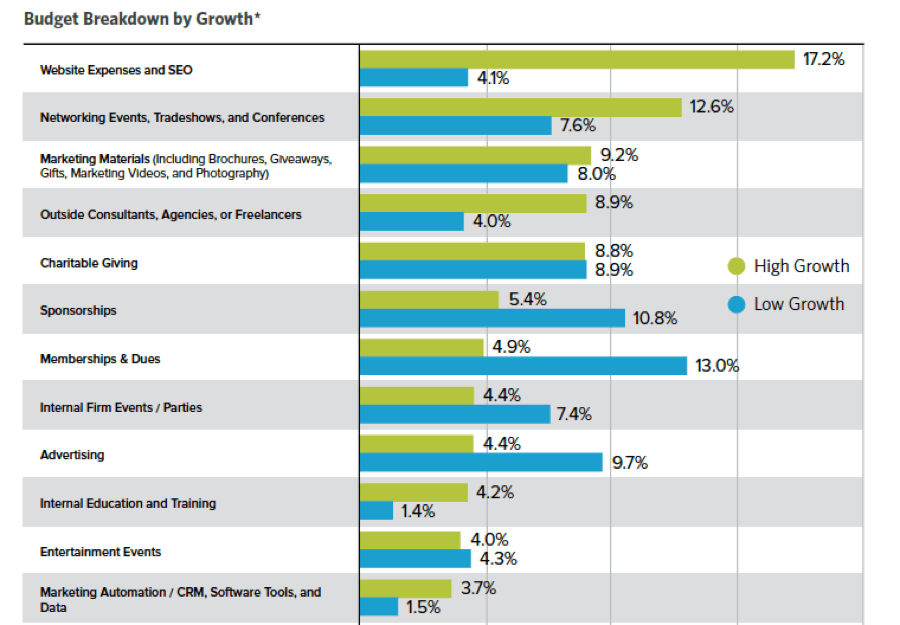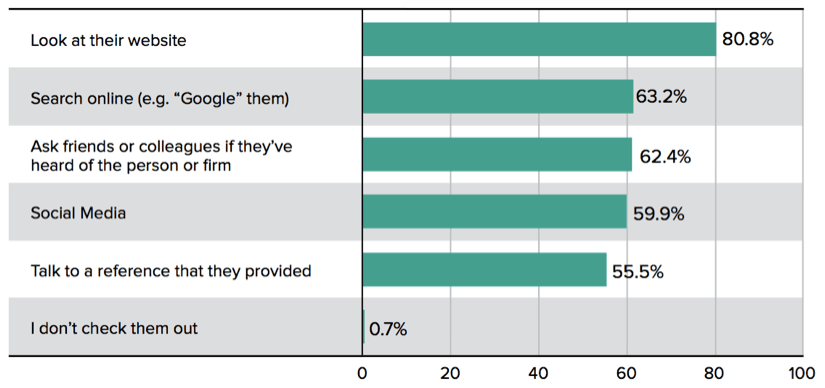I recently met the new sales director of a well-respected technology firm that I’ve known for over five years. This person is the third sales director within the last five years, and the firm has gone through three times as many business developers during that same timeframe. The new sales director said something that made me cringe: “We’re hiring an additional business developer and stopping all of our marketing efforts because our owner says business development is our lead generation.”
I cringed because it was an “old school,” dated way of thinking about lead generation and firm growth. Long gone are the days of getting deals on the golf course, much less knocking on a company’s door to sell them $100,000+ in professional services. And, heavy association sponsorships and networking is not the answer either. A balanced mix of face time (business development) and ongoing education (mostly via content) can generate interest in your firm, ultimately raising visibility and attracting leads.
SEE ALSO: Driving Business: When Business Development and Marketing Are in Sync
How do I know this? Research. To be exact, Hinge’s research into why B2B buyers do what they do in selecting professional services firms. We know (and share in Beyond Referrals: How Today’s Buyers Check You Out) that professional services firms’ buyers “check out” a firm’s website 80.8% of the time. Also, the average buyer uses 3.2 methods to “check out” a potential firm, which means that firms must be accessible on multiple channels. A one-sided approach will not work in today’s marketplace.

When having a pure business development approach, you lack easy-to-close leads generated by your website. Also, you miss out on the continuity and longevity of content marketing. A single blog post stays on your website and is still searchable on Google years down the road, while buyers forget sponsorships within months, if not within just a few days. Also, as business developers come and go (or retire), the company loses many of those contacts and leads. Even the best CRM diligently cared for won’t keep 100% of the leads because professional services firms are about relationships.

With content marketing, you not only get the lead generation through the web, but you also get the continuity of it. Even if a firm struggles to retain in-house marketers, their content remains intact. The next marketer can pick up where the last one left off, make adjustments, and keep going.
Some would argue that content doesn’t create relationships. Instead, people do. Yes, people create relationships, and people also create content. For many prospective buyers, a blog post a professional writes is the prospect’s first impression of the firm and the expert. As time passes, that prospect reads more blogs, guides, articles, and attends webinars. They feel like they know that expert, even though they’ve never met. Especially with social media today, people can connect with experts on a personal level although they do not know them personally. Experts are rock stars in their niche markets without having to worry about the paparazzi.
Let’s not forget about offline content too. Article writing, presentations, and especially books, can bring more visibility and increase the reputation of an expert, thus creating more relationships and generating more leads. Networking at a conference full of your prospects as the go-to expert provides a much stronger ROI (Return On Investment) than sponsoring or just attending.
I’m not saying let go of your business developers and go 100% to content marketing. That would be rash. You still need your business developers to open doors, close deals, and to train your seller-doers. I’m saying you need a dual approach with a mix of content marketing and business development to maximize your lead generating opportunities.
The past two years, Hinge has done an extensive survey with the AAM (Association for Accounting Marketing), and it has revealed stunning insights into the need for both methodologies, in particular, the need for established firms to start utilizing content marketing tactics along with their current networking.
In the 2015 AAM study, we segmented our findings by growth and looked specifically at what the top 20% high-growth accounting firms did with their marketing in contrast to the 20% low-growth accounting firms. Our research clearly illustrated the juxtaposition of the high-growth companies that grew at an average rate of 24.15% while the low-growth firms actually shrunk an average of -1.65%.
When reviewing the budgets of the high growth firms, the top two expenses included website and SEO (Search Engine Optimization) and Networking Events, Tradeshows, and Conferences. An obvious sign that a mix of both content marketing and networking is a must to see double-digit growth. On the other side, the low-growth firms spent less than a quarter of the amount on their website, instead spending their money on Membership Dues, Sponsorships, and Advertising. For all that money, they still say a negative growth rate.
See the chart for yourself. High growth firms spent over 17% of their budget on their website while the low growth firms spent just 4% on the same item. Instead, they spent a third of their budget on paid advertising, memberships, and sponsorships. The high growth firms spent just under 15% of their budget on those items, leaving room in their budgets to maximize their website for lead generation.

These marketing efforts translated into a loss of over $100,000 for the low-growth firms from 2013 to 2014 while high-growth firms grew by $1.28 million.
Even if you’re not in the Accounting sector, I suggest you look at this AAM study. It is insightful to say the least, and we have further analysis and breakdowns between small, medium, and large firms. (Spoiler alert – the small firms make up most of the high-growth firms, and they’re catching up in size quickly.)
Additional Resources
- Download our free book Spiraling Up to learn how to develop a high-growth, high-value strategy for your firm.
- Check out our free research-based book Inside the Buyer’s Brain to learn how your business development team can close more leads by understanding what the buyer really wants.
- Our Lead Nurturing Guide for Professional Services explains how you can craft a powerful lead nurturing strategy for your firm, so you can turn leads into clients.
How Hinge Can Help
Hinge has developed a comprehensive plan, The Visible Firm℠ to address these issues and more. It is the leading marketing program for delivering greater visibility, growth, and profits. This customized program will identify the most practical offline and online marketing tools your firm will need to gain new clients and reach new heights.

